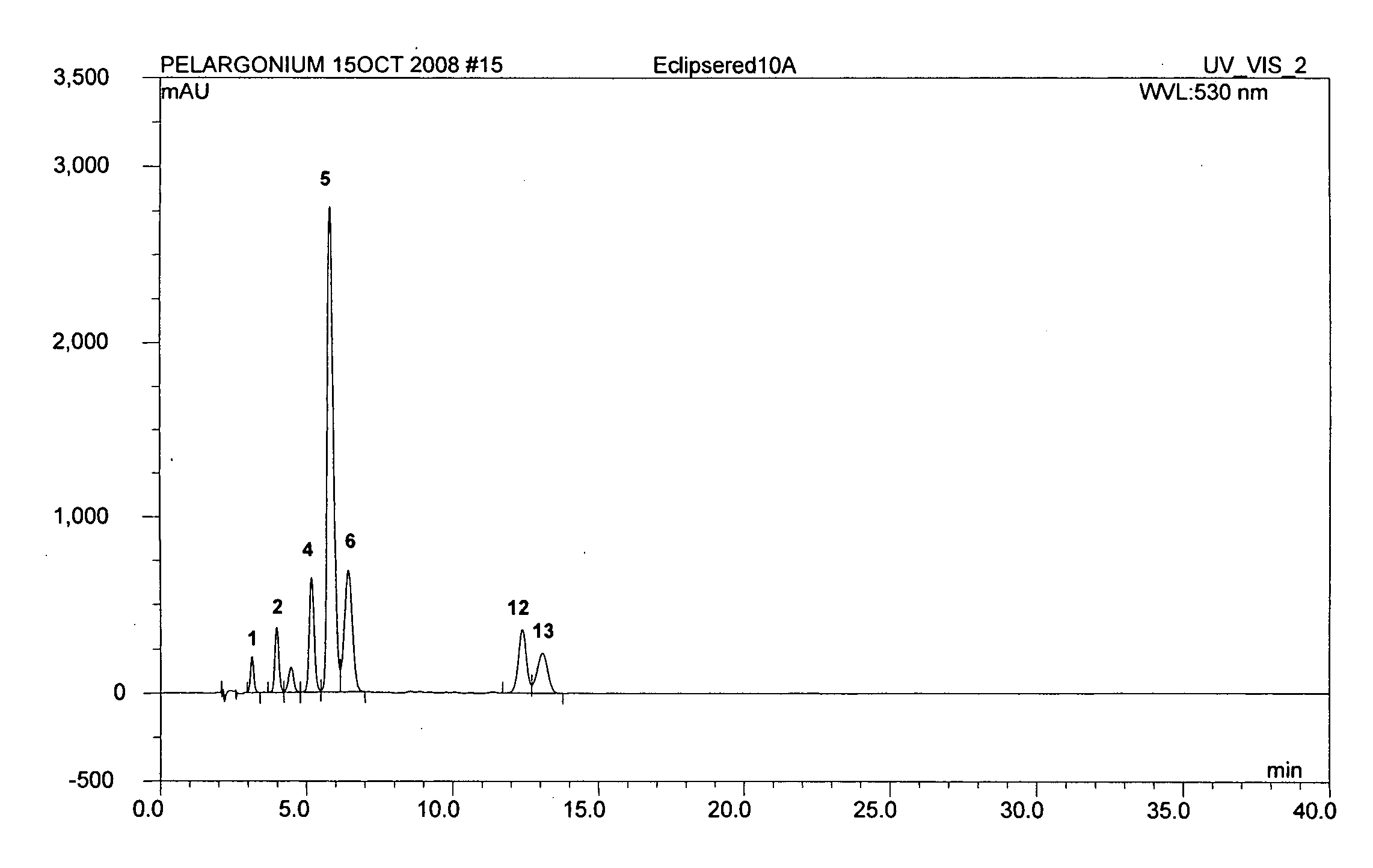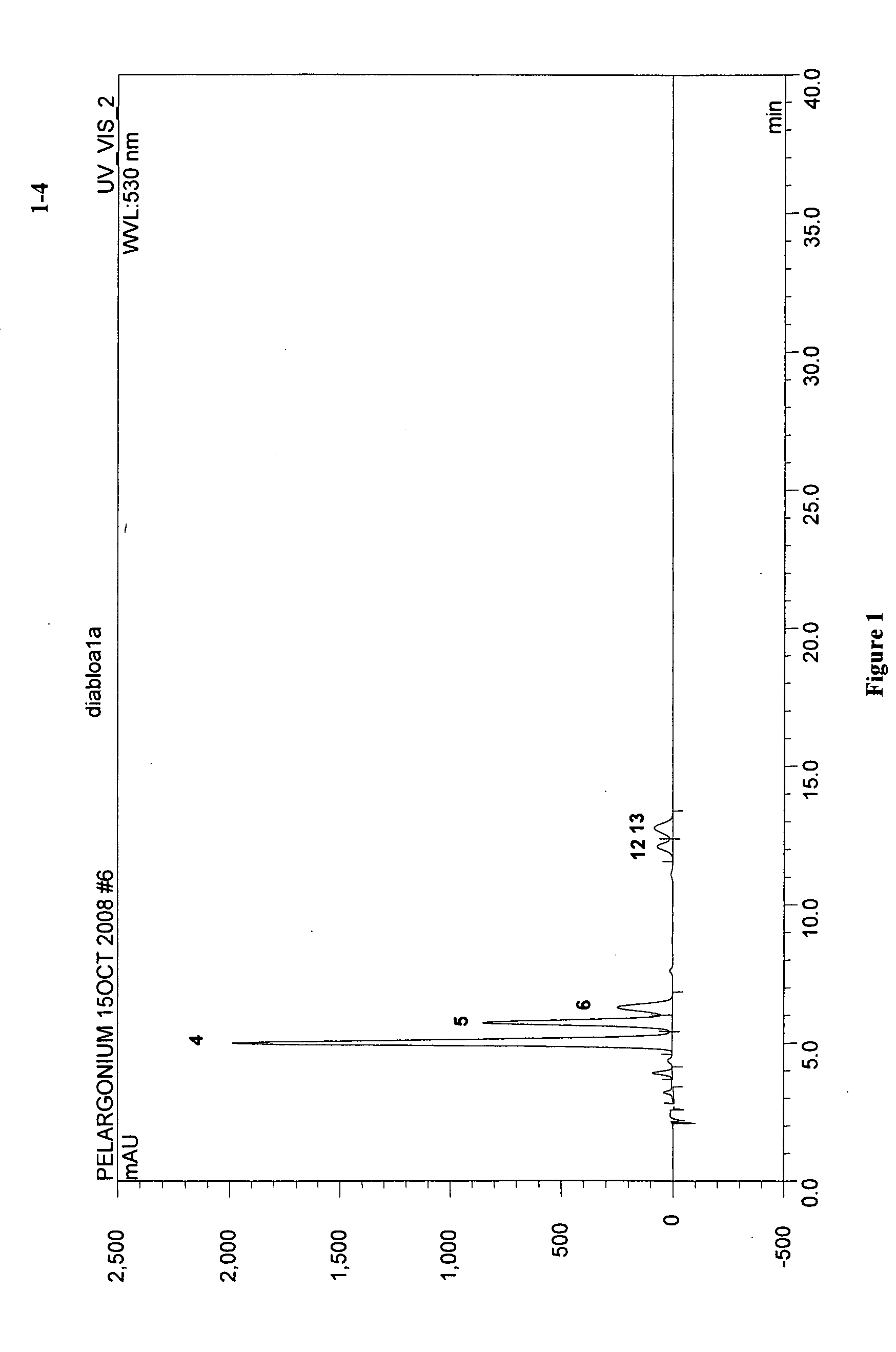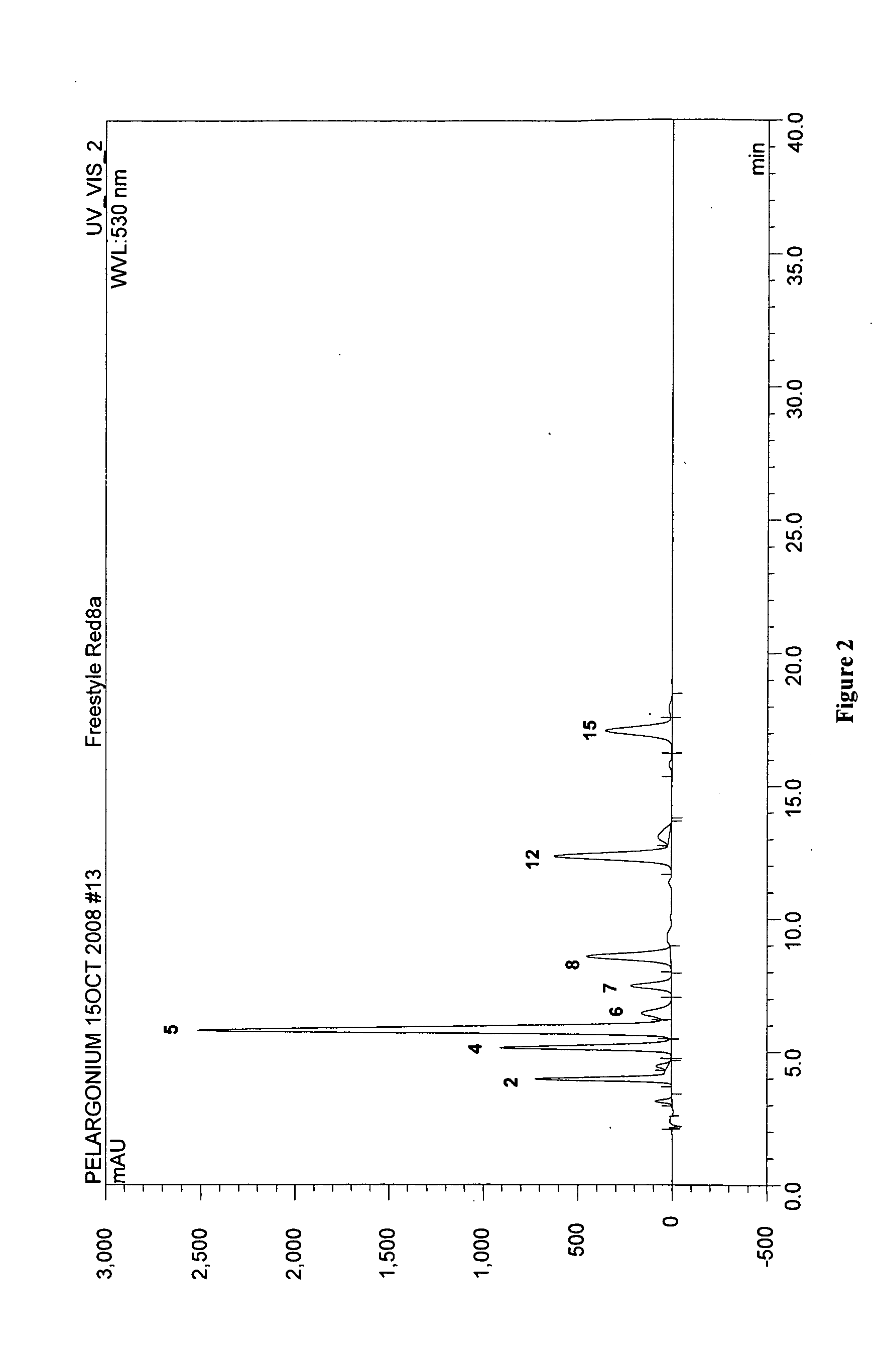Flower Pigmentation in Pelargonium hortorum
- Summary
- Abstract
- Description
- Claims
- Application Information
AI Technical Summary
Benefits of technology
Problems solved by technology
Method used
Image
Examples
example 1
Development of the Plants of the Present Invention by Introgressing Traits from P. peltatum to P. hortorum
[0093]The dark red to burgundy or darker petal colors of the plants of the present invention are the result of many generations of crossing and selecting plants of Pelargonium hortorum crossed with Pelargonium peltatum. The breeding process involved 14 generations of crosses and selections, using at least 10 different ivy geraniums in the process. The unique colors in the zonal interspecific plants of the present invention are derived from ivy geraniums (Pelargonium peltatum). Because ivy geraniums usually cannot be successfully grown in full-sun and are sensitive to the physiological disease known as edema, the new zonal interspecific plants of the present invention are a new and novel development.
[0094]The process of breeding and selecting the zonal interspecific plants of the present invention has resulted in plants that have the utility of both a zonal geranium and an ivy g...
example 2
Differences in Plant and Height Width Between Plants of the Present Invention and Americana Dark Red
[0097]Table 1 compares the differences in plant width and plant height between 2 selections of the present invention and the commercial zonal geranium variety, ‘Americana Dark Red’. ‘10426-1’ is a trailing dark red selection of the present invention and ‘10612-1’ is a dark red trailing selection of the present invention. The plant widths and heights were taken in a cultivated field in Gilroy Calif. on Oct. 18, 2007. Columns one and two show the plant width and height in inches of selection ‘10426-1’ of the present invention, columns three and four show the plant width and plant height in inches of selection ‘10612-1’ of the present invention and columns 5 and 6 show the plant width and height of zonal geranium ‘Americana Dark Red’. Rows 18 and 19 show the averages and the standard deviation. Note that the selections of the present inventions have an unexpectedly greater plant width th...
example 3
Anthocyanin Analysis of Pelargonium Petals
[0098]Flower petals can be analyzed for their anthocyanin content. Methods for anthocyanin analysis are well-known in the art. Please See Zhang, Z., et al., J. Agric. Food Chem. (2004) 52:688-691 and Kazuma, K., et al., Phytochemistry (2004) 62: 229-237. Sample methods of analysis include a comparison of HPLC profiles of the hydrolysates with anthocyanidin standards, with spectrophotometric quantification of anthocyanins as their aglycons.
[0099]Flower tissue from 10 different Pelargonium cultivars was analyzed to determine the flavonoid and anthocyanin content in the dried petal tissue. The ten Pelargonium cultivars tested were: ‘Diablo’ (zonal geranium), ‘Tango Dark Red’ (zonal geranium), ‘Rocky Mountain Dark Red’ (zonal geranium), ‘Tango 09’ (zonal geranium), ‘Designer Dark Red’ (zonal geranium), ‘Samba’ (zonal geranium), ‘Calliope Dark Red’ (zonal-looking geranium with zonal interspecific background), ‘Freestyle Dark Red’ (ivy geranium), ...
PUM
 Login to View More
Login to View More Abstract
Description
Claims
Application Information
 Login to View More
Login to View More - R&D
- Intellectual Property
- Life Sciences
- Materials
- Tech Scout
- Unparalleled Data Quality
- Higher Quality Content
- 60% Fewer Hallucinations
Browse by: Latest US Patents, China's latest patents, Technical Efficacy Thesaurus, Application Domain, Technology Topic, Popular Technical Reports.
© 2025 PatSnap. All rights reserved.Legal|Privacy policy|Modern Slavery Act Transparency Statement|Sitemap|About US| Contact US: help@patsnap.com



